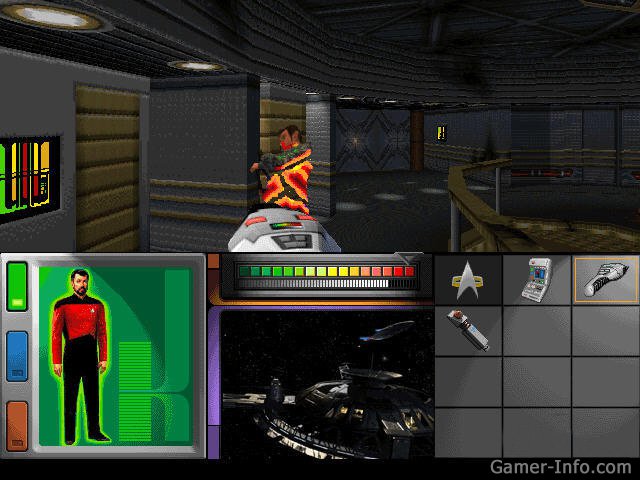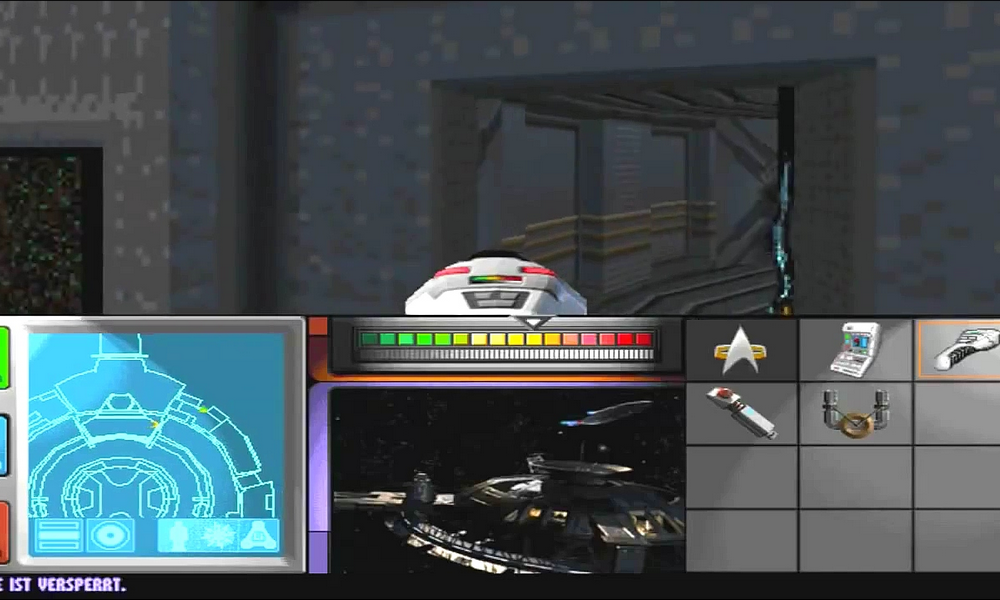

That's quite a lot to keep track of, and this control scheme is both a blessing and a curse. Just above this window is your Phaser settings which detail the strength the weapon has been set to (green is stun, yellow is kill and red is eviscerate) as well as how much power it has left. This is where you can pick up objects, activate screens and solve puzzles. In the centre is the Object Window which offers a detailed view of anything interactive directly in front or beneath you. On the right-hand side is your inventory, which you can drag items into one of the twelve slots or drag them out again. To the bottom left, you have three tabs, your Health display, your Tricorder or map display and your mission objectives.

Whether by examining dead bodies (left) or flipping switches (right) The pace is overall much, much slower than the average Doom clone so it's not entirely detrimental to the overall experience, even if it's not ideal.

The mouse cursor will wave across the screen like a crosshair in a light gun game, playing much the same way as Terminator 2049 or C圜lones. On top of this, you still have your mouse which will do everything else such as aim, soot and manipulate your inventory or environmental objects. This is your movement, including strafing and looking up and down. I ended up having to remap the controls to the number pad because I don't have three hands. If you're a veteran of shooters, you may find the controls a bit weird. With so many lives and planets at stake, the Enterprise has taken upon itself to stop him. Basically, a guy named Soran with some crazy anger issues wants to shoot trilithium torpedoes into a number of suns of various solar systems in our galaxy in order to destroy them. There are a multitude of levels which kind of follow the plot of the already convoluted movie. Released in 1997, Star Trek: Generations adds a heavy dose of adventuring to the first-person-shooter but is it any better for it? Three years after Captain Kirk passed the torch over to Jean Luc Picard in the seventh Star Trek motion picture, MicroProse finally gave us the movie tie in.


 0 kommentar(er)
0 kommentar(er)
